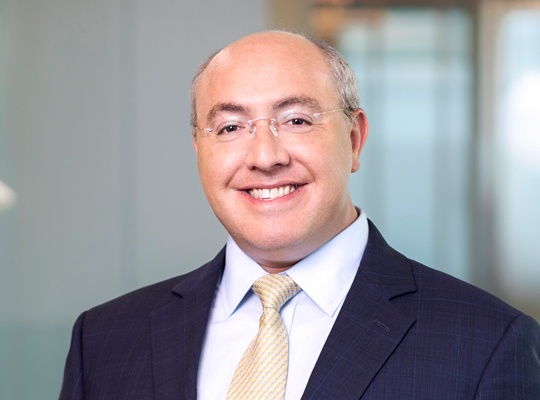Surgeries Conducted More Than a Year Before Patenting Found Not to Bar Patent on Surgical Method
In an important decision impacting life sciences patentees, a divided panel of the Federal Circuit in Barry v. Medtronic, Inc., Appeal No. 2017-2463 (Fed. Cir. January 24, 2019), affirmed a jury’s finding that a doctor was not barred by § 102(b) from patenting a new surgical procedure, even though he performed that surgery on three patients more than a year before applying for a patent.
Section 102(b) bars an applicant from patenting an invention that was either “on sale” or in “public use” in the United States more than one year before the application was filed. In Barry, the majority (Judges Moore and Taranto) held that in each instance, an accused infringer seeking to invalidate a patent must prove that the invention was “ready for patenting” prior to the critical date, which requires a showing that the invention was known to work for its intended purpose and either a reduction to practice or enabling drawings and descriptions. The Court further noted that any alleged statutory bar can be negated by evidence that the sale or use was for experimental purposes, which overlaps with considerations as to whether the invention was ready for patenting.
The patent at issue was directed to a surgical method for correcting spinal column deviations, such as those due to scoliosis, by applying force to multiple vertebrae at once. The patentee, Dr. Barry, worked with medical device companies to develop a tool that allowed him to perform the claimed surgery, and then used that tool in three surgeries performed in 2003 on patients suffering different types of scoliosis-caused spinal deviations. Each of those patients paid Dr. Barry for his services, and they were not subject to any obligation to keep the surgeries confidential. Nor did Dr. Barry inform the patients that their surgeries were experimental. Dr. Barry did not seek a patent on his surgical method until fourteen months after the last of those surgeries.
Nevertheless, the jury found that Dr. Barry’s invention was not “ready for patenting” more than a year before the critical date. Dr. Barry presented evidence at trial that he did not know his surgical method would work until follow-up examinations of each patient three months after their surgeries, at which point the acute phase of their recoveries was completed. Even though the patients’ spines were straightened upon completion of their surgeries, and even though the 3-month follow-up visits for two of the three patients occurred prior to the critical date, the Federal Circuit cited the testimony of Dr. Barry and his expert that it was reasonably necessary to have the follow-up examinations of patients suffering from three different underlying conditions before concluding that his new surgical technique actually worked for its “intended purpose.” This was so even though the invention’s intended purpose was not stated in claim limitations that define the claim scope. Moreover, although that determination was sufficient to affirm the jury’s verdict, the Court went on to find that Dr. Barry had presented sufficient evidence to support a conclusion that the surgeries fell within the experimental-use exception. Neither the fact that Dr. Barry had not advised the patients that his procedure was experimental, nor the fact that patients paid him for his services, was enough to preclude application of the experimental-use exception under the circumstances.
Chief Judge Prost penned a vigorous dissent. She reasoned that Dr. Barry knew the surgeries worked for their intended purpose – amelioration of spinal column deviations – as soon as the surgeries were completed, because at that point the patients’ spines had been straightened and locked into place to some extent. She noted that the preamble of the claim only refers “amelioration,” which means “to improve,” and that the specification says nothing about the need for multiple follow-up visits to assess the results of the surgery. She stated that Dr. Barry’s testimony, indicating that all three follow-ups were necessary and “consistent with standards for peer-reviewed publications reporting new techniques,” was not relevant to either reduction to practice or readiness for patenting under U.S. law. Judge Prost also rejected the majority’s holding that the “on sale” bar requires a finding of actual reduction to practice, arguing that readiness for patenting is all that is required; and that the invention’s “intended purpose” comes into play in the separate but related ready for patenting and experimental-use analyses. Finally, she discounted Dr. Barry’s evidence of experimental use, finding it to be based on his after-the-fact subjective testimony, unsupported by the objective record, which included the fact that he did not inform his patients that the surgeries were experimental and charged them his usual fee.
This decision represents a significant revival of the experimental-use doctrine, which appeared to have become near obsolete in affording a potential patentee the ability to experiment with an invention via what would otherwise constitute a barring sale or public use. The implications for patentees in the life sciences industry are manifold. Pharmaceutical companies may try to use the decision, for example, to argue that a claimed drug product was not ready for patenting, and hence not “on sale” or in “public use,” until later points in the development process, such as after pre-clinical or early Phase I trials or even after efficacy has been established, notwithstanding promising results obtained in earlier phases of drug development. Whether the Federal Circuit would reinforce its standing law, such as In re Brana, 51 F.3d 1560 (Fed. Cir. 1995), to reiterate that the requirements for patentability are not to be confused with the requirements of the FDA for drug efficacy and approval, remains to be seen. It is notable, however, that the Barry Court cited the Helsinn decision to reinforce this very point; that the “standards for FDA experimentation are different from patent law’s ‘ready for patenting’ standards.”



